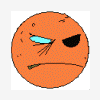I know that is vague, but I saw a job that said you have to have a skillset that included knowing the way to balance games with the right math. I'm guessing they are more puzzle games but I don't know. Hoping for thoughts.
What kind of math do you use to balance games?
Depends on the games, the company, and what they are looking for.
It may mean they want you to run statistical numbers, it could mean they want you to ensure every location has similar offensive and defensive capabilities, it could mean something else.
Many modern games include an 'imperfect balance', where even though options are different they are still evenly powered, where one option's abilities can overcome another's weakness. Exactly how you achieve that balance is unique to each situation.
This is a shot in the dark, but if you can't get more detail from the group that posted the job I would brush up on Decision Analysis concepts, specifically Bayes' Theorem and one- and two-way sensitivity analyses. Even if that's not exactly what they're looking for I think you could make a convincing argument that you could bring some applicable skills to whatever they want balanced.
-------R.I.P.-------
Selective Quote
~Too Late - Too Soon~
Statistics, lots of statistics ![]()
At one past job, game designers would basically have an entire implementation of the game rules in an Excel spreadsheet, tweaked to perfect balance, including information on volatility and demographic appeal, before the programmer even started implementing the game. ![]() (this is not common practice in my experience though!)
(this is not common practice in my experience though!)
. 22 Racing Series .
Just yesterday we happened to post something from our archives to our Facebook page covering this topic -- it's more of an overview than a detailed coverage of maths you might use, but check out "techniques for achieving play balance". :)
- Jason Astle-Adams
At one past job, game designers would basically have an entire implementation of the game rules in an Excel spreadsheet, tweaked to perfect balance, including information on volatility and demographic appeal, before the programmer even started implementing the game. (this is not common practice in my experience though!)
I've seen the exact same thing.
For the free to play games this gets even worse. The big companies have whole teams of data scientists who analyse the game in order to balance the game difficulty so that people will make purchases but without putting off the grinders.
I have seen Excel spreadsheet used also. Things such as hitpoints and weapon damage was there so the designers could tweak it and use the statistics function on them if they like to. Then we exported it to the game to see if it worked as well as the stats said it would ![]() .
.
@spinningcubes | Blog: Spinningcubes.com | Gamedev notes: GameDev Pensieve | Spinningcubes on Youtube
The primary reason for this is that, a game has different outcomes, and it is necessary for a developer to know who will experience what. The question can be as simple as "how often are players likely to win", the answer, however, is likely to take a full spreadsheet tab to get (if not more).
Another use would be game economy. Please note this is not limited to F2P.
Games such as Diablo have an internal economy so that your gear is paid at a fair price. Likewise, there is an economy of stats in how monsters are made (howmany life pts, attack, def, etc.)
A designer ultimately gets asked things such as "how many skill pts should we get on levelup" and the answer can't be random. It needs to help the player catch up with a difficulty curve without ever surpassing it (see Demon's Soul).
Hello guys :) i'm new, this is my first post.
I usually no-life a game until I realize who fits in where and how what works and what the weaknesses and strengths are of everything and everyone.
For example, I played League of Legends for 3 years orso, before season 1 I said they should make some changes to some chars.
In season 3 (2 years later), they made those changes(finally).
Also I played World of Warcraft, WotLK patch 3.3.5a(private servers), when PVPing I kept thinking every type of crowd control should dimishing returns off of eachother, but when I got better in PVP I realized that that would make it noob, which is what they did in Cataclysm/Warlords of Draenor.
But then again, Blizzard makes every patch easier to level and easier lategame content(from what I've heard. I've played WotLK mostly, but heard Vanilla/TBC was a lot harder to level and raid, I played a bit of Cataclysm and leveling was a LOT easier).
That's my biggest limit though, I can analyse, but can't explain it to others, so if you want my help, I will have to play the game myself :P sorry :)
One of the biggest tips from me, which applies to WoW and LoL and DotA and HoN is, if you want to know how to counter a character/class, play it yourself, you'll see the limits of your char/class and you can always see how others counter you :P
Which should(or at least could) help in seeing whether a character/class is overpowered or not.
On the other hand, if you think everything I just wrote is complete crap, maybe the following random stuff will help.
In DotA/LoL, most skills have a base damage plus a scaling damage.
So it will be Z = aX + Y, where Z is total, a is the input from items giving stats, X is the multiplier supplied by the game itself, Y is the base damage.
If you want a character to buy more damage items, you give it good scaling, this also makes the char grow stronger than other chars.
If you want a character to be strong early game, or dont want it to buy damage items, you give it a high base damage, low scaling damage.
The same applies for WoW, but it's a bit more complicated, because in DotA/LoL there aren't a lot of different crit multipliers(DotA has Crystallys, 175% and Daedalus 240% crit damage, LoL has 200% default crit damage, 250% crit damage with Infinity Edge).
In WoW the crit damage multipliers change by class, skill and talents.
But in WoW, spells can crit also, which makes it a lot more interesting and common.
So the formula for damage changes to Z = ((aX + Y) C), where C = the crit multiplier, this formula applies in case of a crit.
The same applies for early/late game and early/late game gear.
Now if you want specifics on choosing talents to level etc, I think you should pm me.
Ofcourse I haven't even started about professions and items yet.
I like to talk a lot, but I'm pretty sure I hid it well this post.
@Dizastor
What you are referring to is maths to reverse-engineer (or rather, reverse-design) a game, and help a player min/max for optimal strategies. It's not totally out of the OP's topic, but I would consider this 'Quality Insure of Game Balance'.
Unlike the process of trying to figure out what algorithm was employed, a designer actually focuses on choosing said algorithm and building it. It requires more than an ability to recognize patterns, but some form of mathematical/statistical imagination with which to bend very objective rules (maths) to help shape something real and complex.
That being said, reverse-engineering similar products tend to help a designer know where to start. For example, becoming a successful min/maxer in several tactical games can greatly help figuring out basic rules to making a successful game balance. It, however, won't guarantee success.














